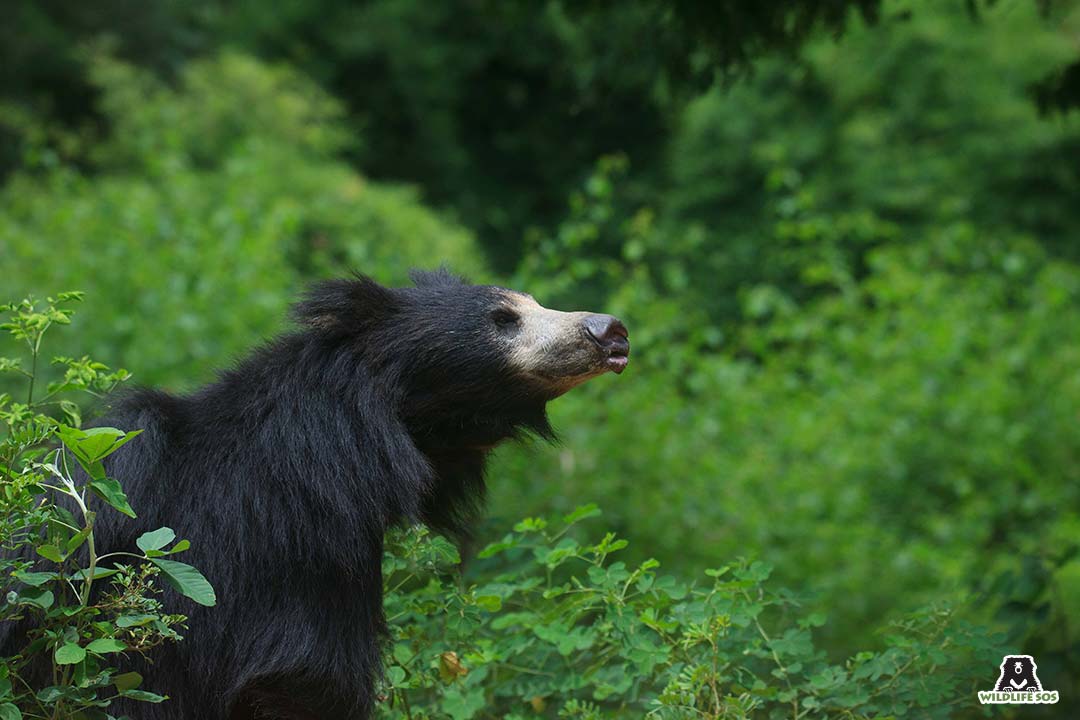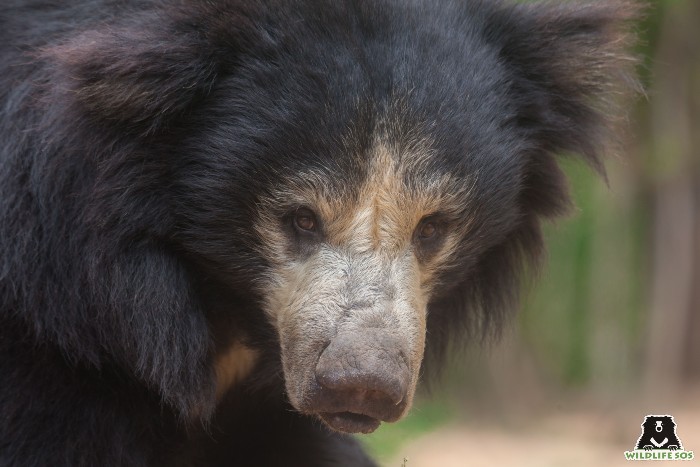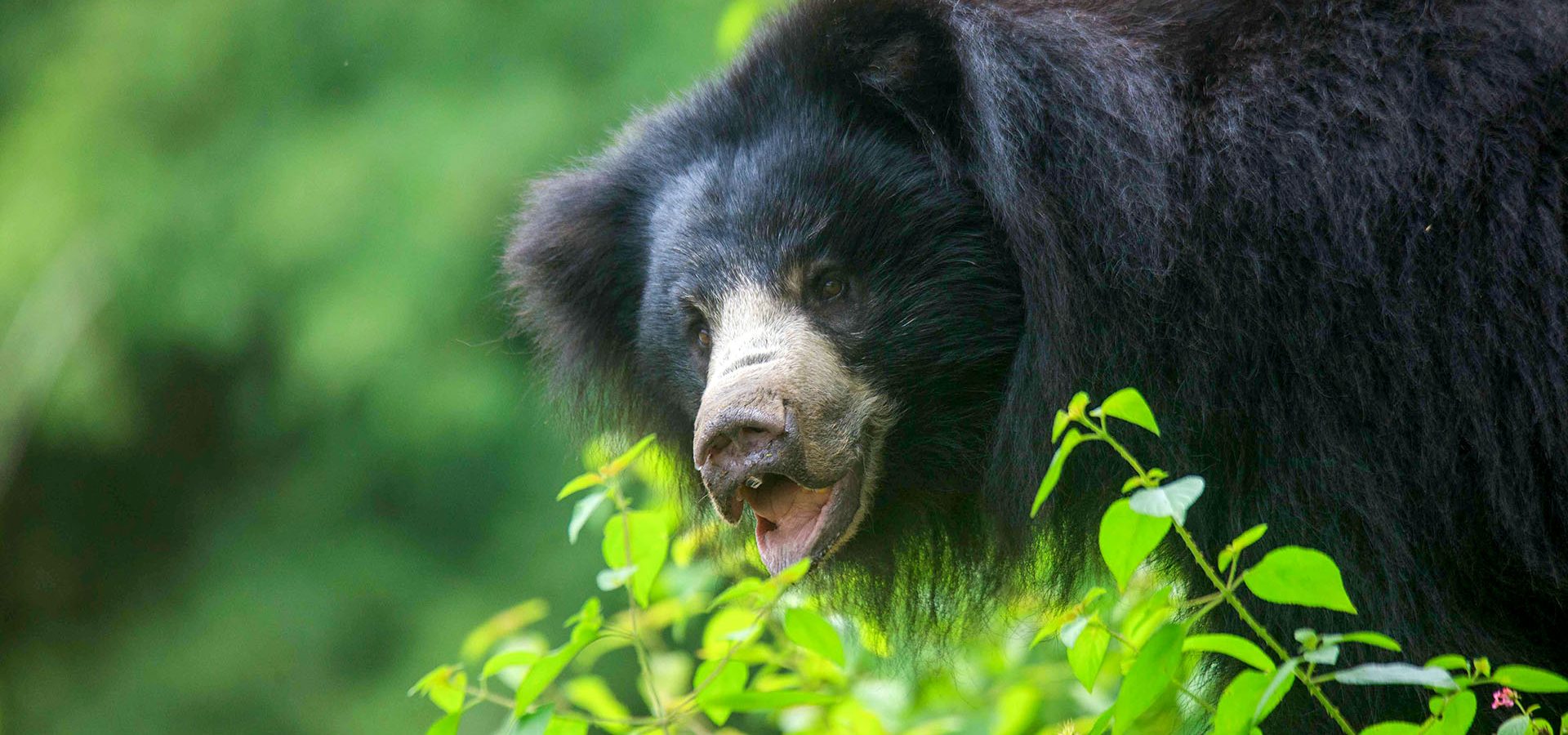Sloth bears, like many wildlife species, are facing an uphill battle as the human population has exploded across the globe and along with it, the loss of suitable habitat. Wildlife SOS, like many other non-government organisations, are running many campaigns to ensure a future for many threatened and endangered species. Hearing about populations declining is disheartening and painful, but education is necessary so that timely action can be taken to improve the likelihood of a species surviving. Important actions are happening on behalf of sloth bears and therefore, we feel hopeful about their future. Here are five reasons to feel optimistic that we can save the sloth bear for generations to come.
Reason 1: Tigers and Tiger Parks – This is actually a bit counterintuitive in that tigers are the one true predator of the sloth bear. To put it bluntly, tigers kill and eat sloth bears. Roughly 2% of a Bengal tiger’s diet (where the two species overlap) is made up of sloth bears. Though this is the case, sloth bears generally flourish in tiger parks. And a National or Tiger Park that can hold 60 adult tigers can support at least double that number in sloth bears. The tiger works well as an umbrella species (a species whose conservation is expected to confer protection to a large number of naturally co-occurring species), affording the sloth bear further protection. This is one case where the charisma of the tiger overshadowing other species actually works for the sloth bear’s benefit instead of against it. Believe it or not sloth bears are generally not considered to be as charismatic as tigers (though we would dispute this notion!). Tiger numbers have gone slightly up in India, and this is good news for sloth bears. So, if you want to support sloth bear conservation, support tiger conservation! It’s a win-win!

Reason 2: Termites and Ants are a Plentiful Food Source – Sloth bears are myrmecophagous, which is simply a fancy way of saying that sloth bears eat termites and ants. In fact, roughly half of a sloth bear’s diet is made up of termites and/or ants. And these bears have several physical adaptations to efficiently feed on these insects, including long claws for digging, a raised palate to be able to suck up termites, and even independently closing their nostrils, which is probably an adaptation for keeping soldier termites out of their nasal passages. The fact that about half of their diet comes from very common insects means that it is more unlikely that reduced food sources will threaten their existence.
Reason 3: A Bear with a Small Home Range – Sloth bears have the smallest home ranges of any bear species. A female sloth bear has a home range of less than 10 km2 (just less than 4 square miles), while a male sloth bear may have a home range roughly double that of a female. The Sri Lankan sloth bear has an even smaller home range, roughly half that of a mainland sloth bear. Compare those numbers to that of brown bears or polar bears. Brown bear home range at the small end is roughly 180 km2 (around 70 square miles). A small polar bear home range on the small end is a whopping 50,000 km2 (just over 19,000 square miles). The only bear species that has ever been recorded to have roughly as small a home range as sloth bears was American black bears that were confined to islands. The small size of a sloth bear home range is probably related to their diet of 50% termites and ants. If a food source is common, there is no need to move great distances. A smaller home range means potentially more bears can be packed into a smaller area. This means that potentially a smaller area is needed for a viable population to be present.

Reason 4: Tolerance of other Sloth Bears – Sloth bears are socially tolerant of other sloth bears and home ranges of sloth bears overlap to a great extent with other sloth bears of both sexes. Infanticide (an adult male bear killing cubs to move up the time table of adult females to breed again) seems to be incredibly rare in this species, if occurring at all. Fights rarely amount to more than just squabbles. This social tolerance may also partly be the result of being myrmecophagous, not needing to compete for food as often. This tolerance potentially allows for more bears to be packed into a smaller area, at least if there are enough natural resources, which means that a smaller area is needed to have a viable population.
Reason 5: Wildlife SOS Resolving the ‘Dancing’ Bear Trade – In December of 2009, Wildlife SOS helped resolve the 400-year-old ‘dancing’ bear trade in India. This practice was not only inhumane but also threatened wild sloth bear populations in the country. Young cubs were poached from the wild to keep the practice alive. Not only that but mother bears were often killed in an effort to secure the cubs. The loss of cubs and reproductive females from wild populations had a large negative impact on wild bear populations. By ending the dancing bear practice, there has been less of a market for poached sloth bear cubs. That said, Wildlife SOS continues its non-poaching work throughout India and works to ensure that the practice of ‘dancing’ bears in India does not return.
We do have a lot of reasons to be optimistic about sloth bear conservation. However, what is essential is that people continue to care about these bears thriving in the wild. If you love these bears and want to help with protecting them for generations to come, please consider a donation to Wildlife SOS.





